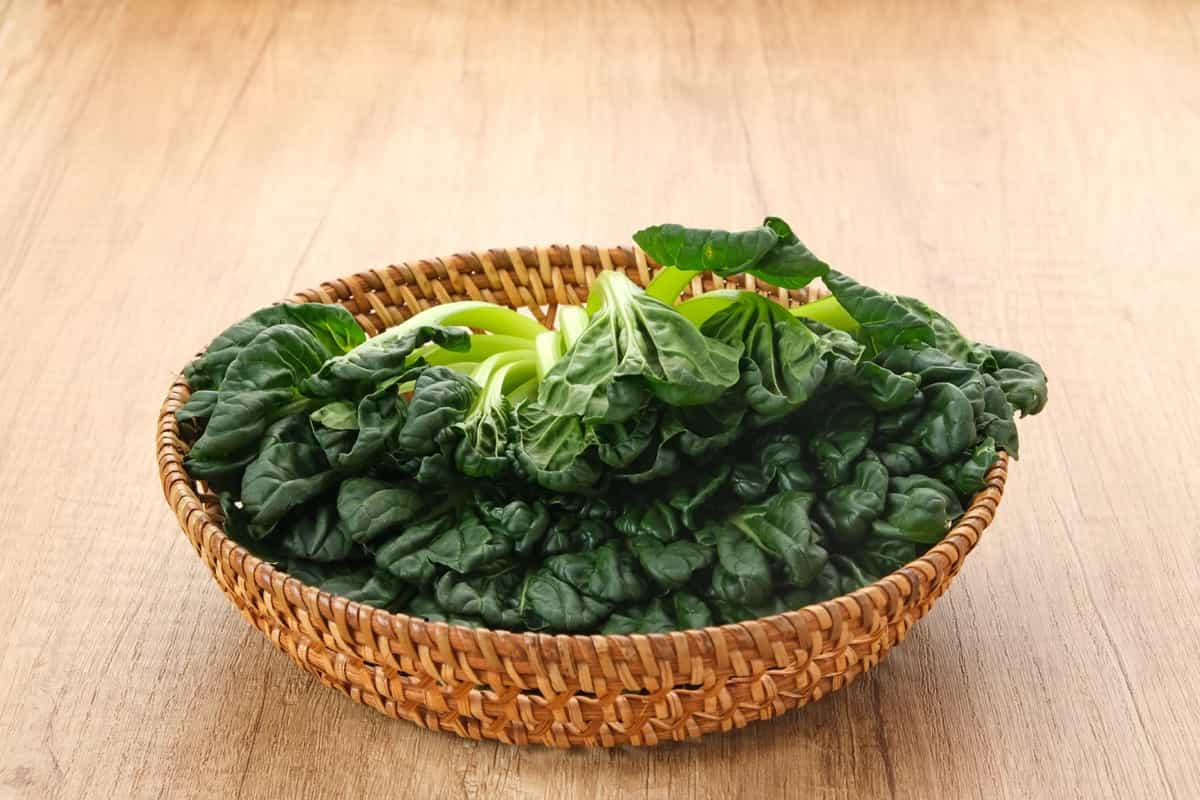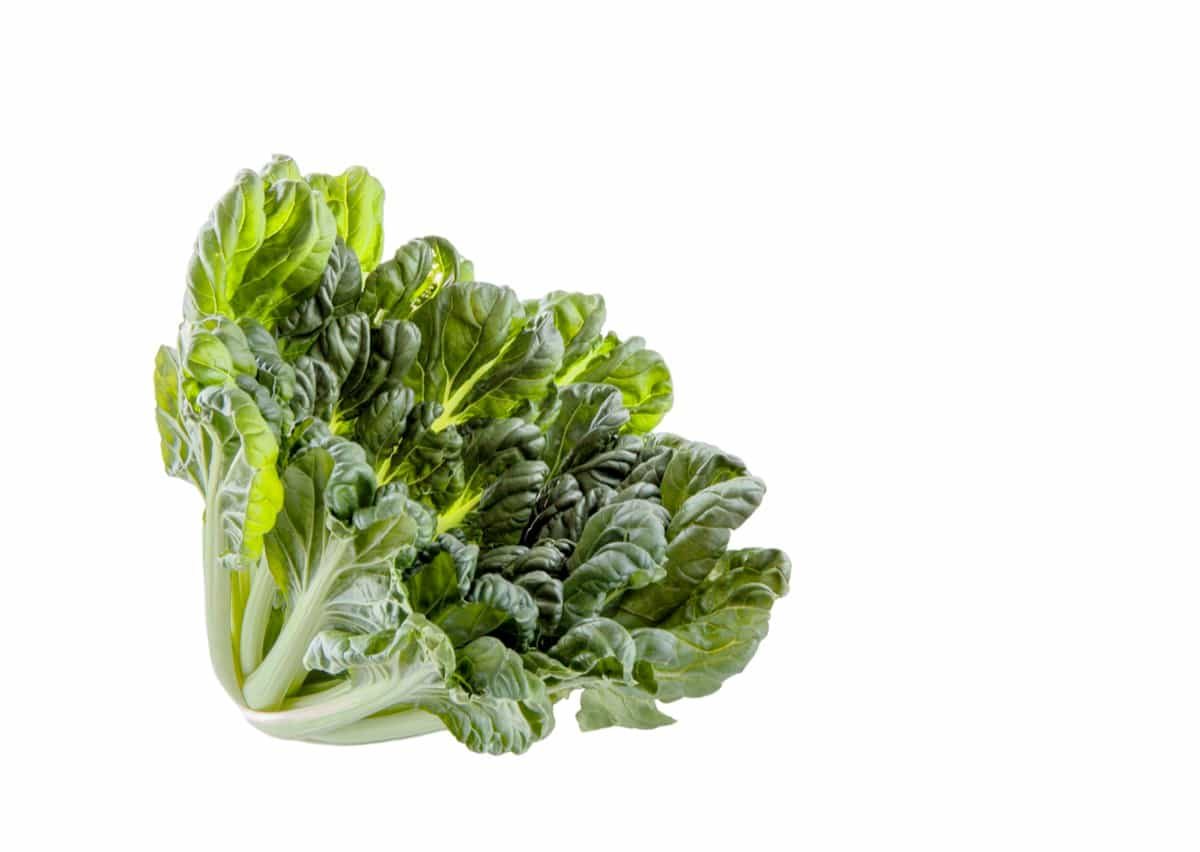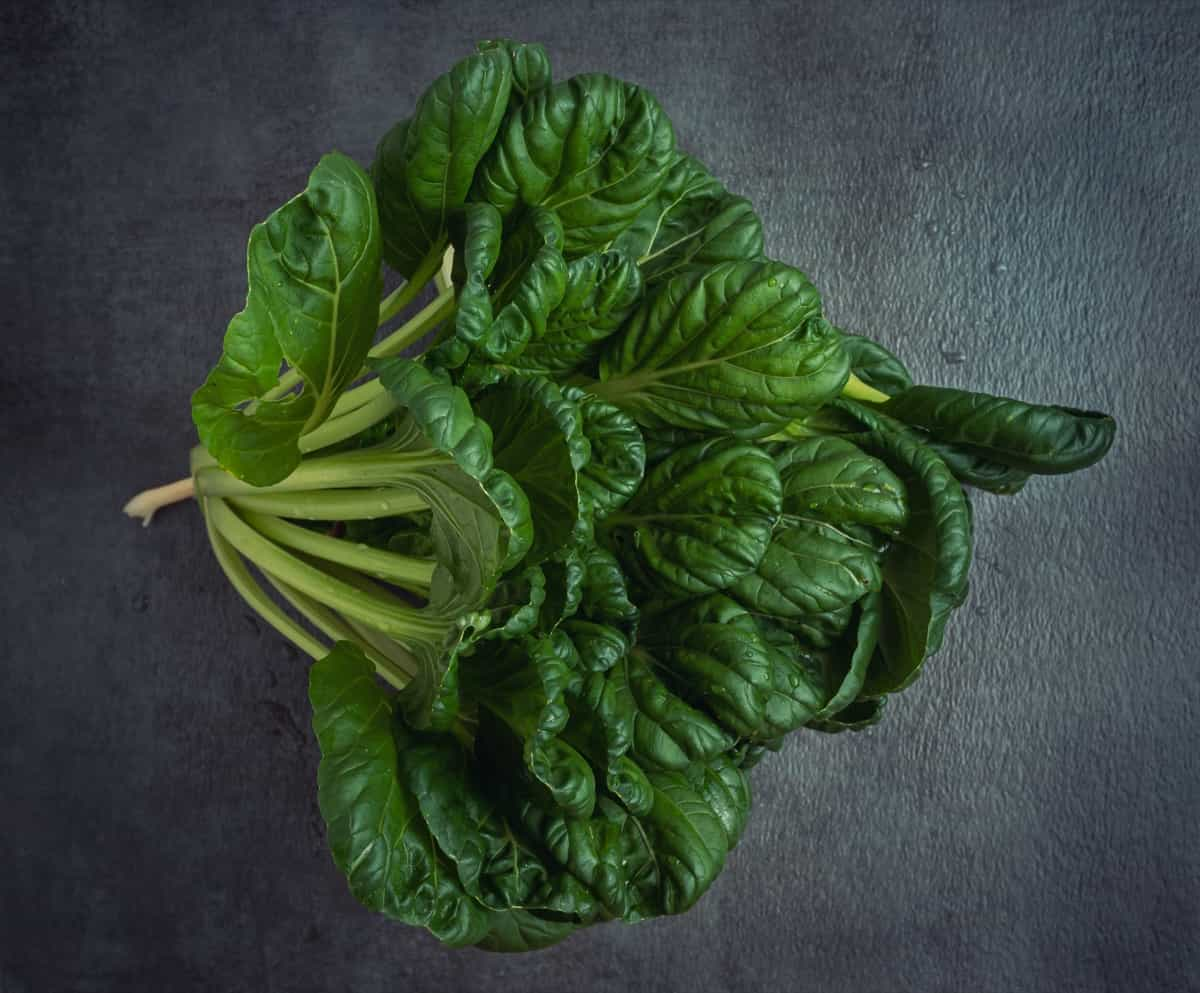Misome is a fast-growing vegetable, so plan your plantings accordingly for a continuous supply throughout the season. Derived from a cross between two Japanese leafy greens, Komatsuna and Tatsoi, this vibrant botanical wonder goes by the scientific name Brassica campestris narinosa.

How to Grow and Care for Organic Misome Greens
Organic Soil Requirements for Successful Misome Growth
- To ensure the successful growth of organic Misome greens, choosing the right type of soil is essential. Organic Misome thrives best in fertile soil rich in nutrients and good drainage.
- Fertile soil provides the necessary nutrients for healthy plant growth.
- By selecting fertile and well-drained soil for your organic Misome garden bed, you set a solid foundation for healthy plant development and ensure a bountiful harvest of delicious leafy greens.
Step-by-step Instructions for Growing Organic Misome Greens
- Preparing the Soil – Select a sunny spot in your garden for growing organic Misome greens. Ensure that the soil is well-drained, as this will provide optimal conditions for growth.
- Sowing the Seed – Once you have prepared the soil, it’s time to sow the Misome seeds. Plant them at about a quarter-inch depth and space them out evenly. Remember to water gently after sowing to ensure proper moisture levels.
- Providing Adequate Watering – Watering is essential for healthy Misome growth. Regularly check the soil’s moisture level and adjust your watering schedule accordingly.
- Fertilizing Your Misome Plants – To promote healthy growth, consider using organic fertilizers rich in nitrogen, phosphorus, and potassium. Apply these fertilizers according to their instructions or consult a local gardening expert on suitable options.
- Monitoring for Pests and Diseases – Regularly inspect your Misome plants for any signs of pests or diseases, such as aphids or leaf spots. If detected early, you can use organic pest control methods to keep these unwanted visitors at bay.
- Harvesting Your Organic Misome Greens – Misome greens are typically ready for harvesting around 30 days after sowing seeds. You can opt for continuous harvest by cutting mature leaves from each plant without uprooting it completely. This way, new leaves will continue growing while providing fresh greens throughout the season.
Best Practices for Caring for Organic Misome Plants
- Sunlight: Organic Misome plants thrive in full sunlight, so choose a location in your garden that receives 6-8 hours of direct sunlight daily.
- Fertilizing: Use organic fertilizers rich in nitrogen to promote healthy growth. Apply compost or well-rotted manure before planting and side-dress with additional compost every few weeks throughout the growing season.
- Pruning: Regularly remove damaged or yellowing leaves to encourage fresh growth and prevent the disease from spreading.
- Pest control: Monitor your Misome plants regularly for pests like aphids or caterpillars. Use natural methods such as handpicking or spraying with neem oil solution to keep them at bay.
- Companion planting: Consider planting aromatic herbs like basil or marigolds alongside your Misome plants, as they can help deter pests naturally.
Watering and Fertilizing Organic Misome: Dos and Don’ts
- Do water consistently: Misome needs regular watering to thrive, especially during dry spells. Provide enough water to keep the soil evenly moist but not soggy.
- Don’t overwater: While providing adequate moisture is important, avoid overwatering the Misome plant, as it can lead to root rot and other issues. Ensure proper drainage in your planting area or containers.
- Do mulch around the base: Mulching helps retain moisture in the soil, reduces weed growth, and provides a protective layer for roots during extreme temperatures.
- Don’t use chemical fertilizers: Organic Misome thrives best when nourished with natural fertilizers like compost or well-rotted manure. Avoid synthetic chemicals that can harm the plant and impact its nutritional value.
- Apply fertilizer sparingly: Too much fertilizer can result in excessive leafy growth at the expense of flavor and texture. Use organic fertilizers rich in nitrogen and potassium to support foliage development and overall plant health.
Organic Pest Control Methods for Misome Plants
- One of the best ways to prevent pest infestations is by practicing good garden hygiene. Keep your garden clean and debris-free, as this will discourage pests from Misome plants. Regularly remove any weeds or dead leaves that may attract insects.
- Another natural way to control pests is by encouraging beneficial insects into your garden. Ladybugs, lacewings, and parasitic wasps are all-natural predators of common Misome pests like aphids and caterpillars. You can attract these helpful bugs by planting companion flowers such as marigolds or yarrow.
- In addition to these methods, regular inspection of your plants is crucial in early pest detection and prevention. By closely monitoring the health of your Misome leaves and stems, you can quickly identify any potential problems before they escalate into full-blown infestations.
In case you missed it: How to Grow and Care for Organic Mibuna Greens: Guide for Planting to Harvest

Companion Planting with Organic Misome for Enhanced Growth
Lettuce – Not only do the two vegetables share similar growth habits, but lettuce also provides shade to the young Misome plants as they establish themselves. This shade helps prevent them from bolting prematurely in hot weather.
Radishes – These root crops help break up compacted soil, allowing both plants better drainage and root development. Plus, radishes mature quickly, which means you can harvest them before they start competing with the Misome for nutrients and space.
Basil or cilantro – Aromatic herbs like basil or cilantro near your Misome can repel pests such as aphids or caterpillars. The strong scent of these herbs acts as a natural deterrent while adding flavor complexity to your meals.
Remember to rotate your crops to prevent nutrient depletion and reduce disease buildup in the soil. By experimenting with different companions throughout the seasons, you’ll discover which combinations work best for enhancing the growth and overall health of your organic Misome garden.
Organic Propagation Techniques for Growing Misome from Seeds
- Growing Misome from seeds is a rewarding and satisfying experience. You can ensure this delicious leafy green vegetable’s successful germination and healthy growth with the right techniques.
- To start, choose high-quality organic Misome seeds from a reputable source. These seeds should be stored properly in a cool and dry place until you are ready to plant them.
- Before sowing the seeds, prepare your soil by ensuring it is fertile and well-drained. Misome greens thrive in soil with temperatures ranging from 10°C to 21°C. Maintaining a minimum soil temperature of 12°C is important for successful germination.
- When sowing the seeds, remember that they should be planted about ¼ inch deep into the soil. Be mindful not to bury them too deeply, as they need access to light for proper growth.
- After sowing, keep the soil consistently moist. Regularly monitor the moisture levels and adjust watering accordingly.
- Once your Misome plants have sprouted, thin them out if necessary to provide adequate space for each plant to grow without competition. This will promote healthier growth and prevent overcrowding.
- As with any organic garden, it’s important to practice sustainable pest control methods such as companion planting or natural remedies like neem oil or insecticidal soap if necessary.
Harvesting and Storing Organic Misome: Tips and Techniques
One popular technique for harvesting Misome is “continuous harvest” or “cut and come again.” This means that instead of waiting for the entire plant to mature before harvesting, you can cut off individual leaves as needed while allowing the plant to continue growing. Misome plants grow rapidly during summer, ready for use 30 days after sowing.
When it’s time to harvest, look for large outer leaves that are dark green. Snip off these mature leaves at their base using scissors or garden shears, leaving smaller inner leaves intact. This way, new growth will continue from the center of the plant. To store harvested Misome greens, thoroughly rinse under cool water to remove dirt or debris. Gently dry using a clean kitchen towel or paper towel.
As with most leafy greens, storing Misome in an airtight container or resealable plastic bag lined with slightly damp paper towels is best. Please place them in the refrigerator, where they’ll stay fresh for up to one week. By practicing continuous harvest and proper storage techniques, you can enjoy freshly picked organic Misome throughout its growing season without compromising taste or quality.
In case you missed it: How to Pollinate Plants in Greenhouse: Hand Pollination, Natural Pollination Methods, and Tips

Conclusion
Caring for organic Misome plants ensures their healthy growth and abundant harvest. Its distinctive flavors make it an exciting choice for salads, stir-fries, soups, and more. Fertilizing your organic Misome greens is important to promote healthy growth and nutrient-rich leaves.
Note: The images presented in this post are intended solely for representation purposes. The images are meant to serve as visual aids and should not be relied upon as accurate representations of their real-life counterparts.
- Ultimate Guide to Ossabaw Island Hog: Breeding, Raising, Diet, and Care
- Ultimate Guide to Juliana Pig: Raising Facts, Size, Diet, Care, and Lifespan
- Raising Lleyn Sheep: Disadvantages, Price, Uses, Characteristics, and Care
- Ultimate Guide to Meishan Pig: Breed Facts, Breeding, Raising, and Care
- Ultimate Guide to Teacup Pigs: Raising, Diet, Lifespan, Cost, and Care
- Guide to Raising Poll Dorset Sheep: Facts, Profile, Characteristics, Uses, and Care
- Ultimate Guide to Bighorn Sheep: Characteristics, Diet, Lifespan, Breeding, and Lifecycle
- Ultimate Guide to Raising Katahdin Sheep: Farming Facts, Breed Profile, Uses, and Care
- Ultimate Guide to Raising Oreo Cows: Belted Galloways Farming Facts, Profile, Uses, and Care